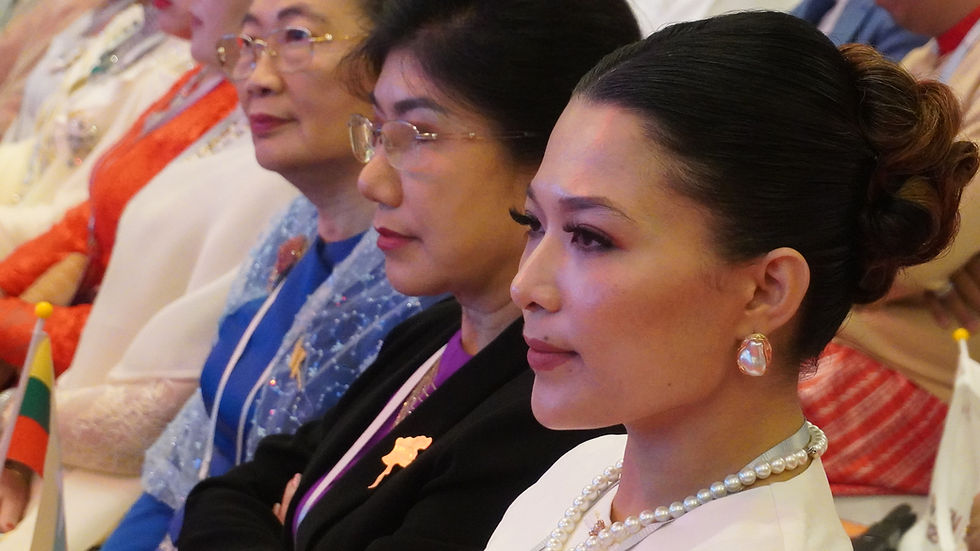The situation of the conflict between Thailand and Cambodia as of 28 July 2025
- Editorial team

- Jul 28
- 4 min read
The fighting, centred on the disputed areas of Prasat Ta Muen Thom and the ‘Emerald Triangle’, has already left more than 30 people dead and displaced nearly 200,000. Between diplomatic interventions, a humanitarian crisis and political tensions, the future of the region remains complicated and uncertain.

Military escalation and humanitarian crisis
On the morning of 28 July 2025, the border between Cambodia and Thailand was mired in a crisis of unprecedented severity in over a decade. Hostilities, which broke out on 24 July around the disputed areas of Prasat Ta Muen Thom and the famous ‘Emerald Triangle’, continue despite international calls for a ceasefire.
The clashes, including heavy artillery fire, air strikes and tank battles, have left at least 34 people dead, according to official and cross-checked figures: 21 on the Thai side (including eight soldiers) 13 on the Cambodian side (including five soldiers) – and more than 200,000 displaced persons, including approximately 138,000 Thais and 80,000 Cambodians who were evacuated in an emergency.
Cluster bombs: a proven accusation
This time, accusations of the use of cluster bombs have been met with an exceptional response: Thailand has publicly admitted to using these weapons on Cambodian military positions, citing ‘military necessity’ and pointing out that it is not a signatory to the Convention banning this type of weapon.
Several independent international investigations, including those conducted by Human Rights Watch and the Cluster Munition Coalition, confirm the presence of unexploded submunitions in the affected areas, exposing civilian populations to terrible dangers for a long time to come. This practice has been unanimously condemned by NGOs and the international community, which emphasise the indiscriminate and persistent nature of these weapons.
Martial law has been declared in the neighbouring Thai provinces of Surin and Sisaket. Thousands of families, driven by fear and bombing, have taken refuge in temples, gymnasiums and makeshift shelters. In Cambodian territory, panic has gripped the villages of Oddar Meanchey and Samraong, which have been the scene of crossfire and mass exodus.
Latest developments: difficult dialogue and Malaysian mediation
Despite the severity of the fighting, diplomatic efforts are attempting to regain control. Under international pressure, including personal involvement by US President Donald Trump and the convening of an emergency, but largely ineffective, UN Security Council meeting, Prime Ministers Hun Manet (Cambodia) and Phumtham Wechayachai (Thailand, acting) are due to meet on Monday in Kuala Lumpur, under the auspices of Malaysia, the current chair of ASEAN.
The meeting aims to ‘restore peace’, but neither side seems willing to back down: Cambodia is calling for an ‘immediate and unconditional ceasefire’, while Bangkok is imposing conditions and accusing Phnom Penh of ‘flagrant lack of good faith’ and repeated violations of humanitarian law.
The closure of border posts, the expulsion of diplomats, the recall of ambassadors and the proliferation of mutual accusations are further exacerbating the climate. Thailand claims that Cambodia is deliberately targeting civilian and religious infrastructure, which the latter denounces as propaganda aimed at discrediting Phnom Penh on the international stage.
Competing narratives: perceptions of the conflict in the Cambodian and Thai media
The Agence Kampuchea Press (AKP) and the national media are heavily promoting the Cambodian government's version of events, which is that this is an act of aggression by Thailand and that Phnom Penh is merely defending its people and its historical rights.
They also highlight Cambodia's immediate acceptance of mediation and its lack of interest in engaging in armed confrontation at a time when the country, in the midst of economic recovery, has made stability a priority.
Other voices, particularly from Cambodia and some independent observers, have denounced Bangkok's exploitation of the crisis to divert attention from a turbulent domestic political situation in Thailand, where the transition of power has remained fragile since the beginning of the year.
Humanitarian and economic consequences
The human and material toll is already heavy. Infrastructure has been massively affected: schools, hospitals, temples and homes have been destroyed or damaged in the bombed areas.
Entire villages have been emptied of their inhabitants, sometimes in full view of international observers or humanitarian teams, whose access remains perilous. The regional economy, already weakened by years of pandemic, is suffering from the disruption of trade routes and tourism, hitting vulnerable border families particularly hard.
Scenarios
The outcome of the dialogue initiated in Kuala Lumpur, although offering a glimmer of hope, remains uncertain. Experience from previous crises around Preah Vihear shows that even formal ceasefires are not enough to eradicate tensions and resentment.
Many analysts believe that only a shared redefinition of the border, validated by a neutral body such as the ICJ or a joint commission supported by ASEAN, accompanied by a genuine effort at reconciliation, will make it possible to break the cycle of national escalation and lay the foundations for lasting peace.
On Monday 28 July 2025, the border remains highly tense. The fate of thousands of displaced civilians, political stability in Phnom Penh and Bangkok, and the security of an entire sub-region hang in the balance, pending the outcome of mediation efforts whose historic significance is recognised by all, albeit with some trepidation.







Comments